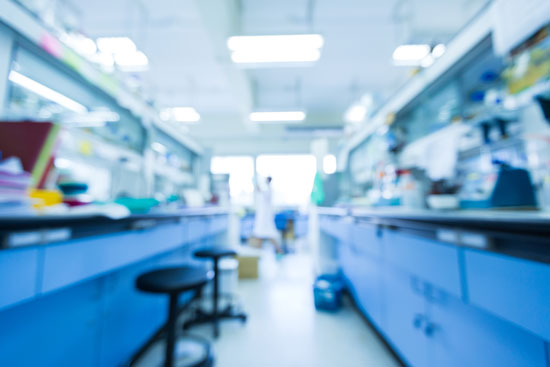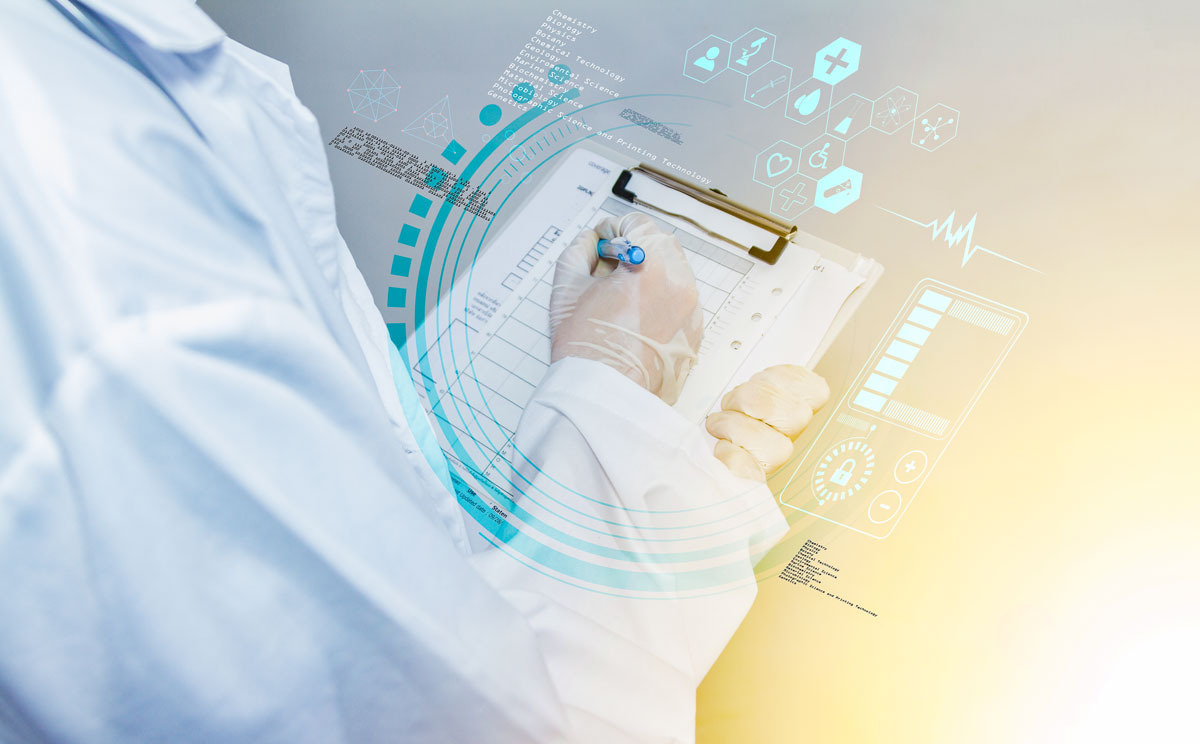Lab Startup Checklist & Guide for Medical Practices
If you’re thinking about adding a lab to your practice, you already know that in-house testing can offer benefits for both your patients and your business. We’ve created this lab start-up checklist and guide to help you through the process.
But it’s what you don’t know that can cost you.
Installing a lab and getting the proper certification can mean following a complex bureaucratic process that requires extensive planning. Any misstep can end up wasting time, money, and even losing patients. That’s why it’s important to know everything that you need in place to set up an in-house lab and keep it running successfully.
This guide offers a look at the reasons thousands of physicians across the country — and many more throughout the world — have decided to set up their own office labs. Perhaps what you find here can help you launch a lab at your practice.
What is a POL?
A POL is a laboratory that operates in a medical practice. POL can stand for physician office lab, or physician-owned lab.
A myriad of regulations across different levels of government can define whether or not a lab is a POL. Some states mandate a specific number of physicians in order for the lab to qualify. Other laws can prohibit which specimens a POL can process. Federal regulations limit the types of tests offered at a POL depending on the expertise of its lab personnel and physicians.
In contrast, reference laboratories are typically run by a larger healthcare entity and can run a broad battery of tests with specimens from multiple sources.
 Reasons to Set Up an Physician Office Lab
Reasons to Set Up an Physician Office Lab
The demand for point-of-care testing is growing. From 2010 to 2019, the number of physician office labs in the U.S. jumped just over 7 percent to 121,387.
More and more, patients are expecting faster, more efficient care. That includes diagnostic test results. Today, someone with diabetes can check their blood sugar in the comfort of their living room. Of course patients are seeking similar results at their doctor’s office.
The reasons to install a lab in your practice can result in benefits across all aspects of your practice. Your patients, your business, your staff.
Additional source of revenue
Instead of sending away specimens to an off-site facility that will then collect their own lab fees, keep insurance reimbursements at your practice.
Offering more options
You can offer more services with an office lab, outperforming other practices and attracting more patients.
Faster results
Eliminating the need to package a sample for shipment to an off-site laboratory can cut out days of waiting time. Getting a test report back in a day can mean faster, more effective treatment and better patient outcomes.
More efficient workflow
The ability to run tests in-house offers better integration between data generated at the lab and the office personnel managing the patient’s health records, increasing accuracy and streamlining the workflow for your staff.
In-house Lab Regulatory Standards
One of the biggest hurdles in opening and running an in-house lab is ensuring it meets regulatory requirements.
The Food and Drug Administration (FDA) and Centers for Medicare & Medicare Services (CMS) are just two examples of the agencies working to ensure labs offer safe, reliable results. To stay operating, physician labs must regularly prove they meet requirements that cover all aspects of their work.
Several different regulatory bodies will inspect labs to check that they meet those standards. Some of the entities and laws to know are listed here.
CLIA
Clinical Laboratory Improvement Amendments are standards enforced by CMS to ensure quality laboratory testing. Depending on the tests a lab offers, requirements can range from equipment documentation to specialty personnel.
CAP
The College of American Pathologists provides accreditation for physician office laboratories through their peer-based inspections. CAP inspections can be done in lieu of a CMS inspection, and can be used to meet many state certification requirements.
OSHA
The Occupational Safety and Health Administration enacts and enforces rules to protect the health and safety of employees in the workplace. Labs must prove their workers have access to safety equipment, and that sanitary conditions are met. HIPAA, The Health Insurance Portability and Accountability Act of 1996, sets national standards safeguarding the privacy of a patient’s medical records. The law spells out security protocols that providers must follow to protect electronic health information.
A Seamless Workflow
A physician’s work and lab work are two separate parts of patient care. Both must run as one smooth operation in order for each to be truly effective.
To get the most out of an in-house lab, a practice should have a seamless integration between its lab data system and patients’ electronic records. Since one will always affect the other, the best way to keep both sides of the practice unified is through a robust laboratory information system, known as an LIS.
A dedicated, flexible LIS can help improve laboratory workflow efficiency and error-proofing by aiding in decision-making, ensuring consistent execution of procedures that increase laboratory productivity, and automating proper billing, ensuring top reimbursement.
Reducing mistakes
Since the LIS automates all processes and steps, it eliminates the intervention by manual handling of patients and reports. LIS reduces the chances of oversight and reading errors through electronic verification. Tracking everything from a single system is what makes an LIS an essential component for your lab.
Improving efficiency
An LIS can automate manual tasks to increase productivity. Some systems can also flag lab results when they reveal changes in a patient’s condition. Laboratories are depending on information systems to combat the increased demand for faster turnaround times and the ever-growing burden of security and regulatory compliance. Connectivity, scalability, automation of processes that streamline laboratory workflow and integration of laboratory data into enterprise-wide information are key issues addressed by an LIS.

Most Common POL Lab Tests
- Mohs frozen sections
- Occult blood
- Blood glucose levels
- Hemoglobin
- Pregnancy tests
- Pathology biopsy testing
- Blood cell count
- Red blood cell percentage
- Strep throat confirmation
- Urinalysis
Lab Inspections: Are You Ready?
To ensure that a lab performs safe and accurate tests, different federal and state regulators will conduct investigations to check for compliance.
Though most inspections are scheduled in advance, they can still provoke stress. (Some inspections can also take place without notice). The best advice? Always be prepared for a surveyor’s visit.
Know what will be inspected
When preparing for an inspection, it is important to keep up to date on the most common deficiencies found in laboratories, as well as looking at past inspections to see what looked at what was improved
Have your information ready
Before an inspection, a surveyor will request a basic overview of your operation, including business hours, test menu, and directions to your location.
Keep your records
Have previous survey reports, quality control records, and any documentation of corrective actions at the ready. Inspectors will cite a deficiency if laboratory staff is not knowledgeable of the current version of your Standard Operating Procedures or if pen and ink changes have not been reviewed by staff.
Staff certifications
Be prepared to show personnel files that include certification, level of education, experience, and training.
Equipment information
You will need to hand over lab equipment installation and maintenance records, as well as calibration and service reports. The best way to be prepared for the equipment requirement of an inspection is to have a binder with all of your equipment documentation in it. Having yearly preventative maintenance on your equipment by a qualified service provider will not only make your inspection go smoothly, but also ensure that your equipment is functioning at optimal levels. The added benefit to this is that it will protect your equipment investment by extending the life of your instruments.
Training and user manuals
Any documentation on the operation and testing of lab equipment must be current, comprehensive, and signed by the lab director. Any changes in procedures since the last inspection must be documented and dated.
Quality control stats
You will need to show records going back at least two years of equipment checks for quality control.
 Avoiding Mistakes
Avoiding Mistakes
Setting up a lab in your practice is one way to improve patient care. It can also be a way to increase a practice’s revenues.
To make these possible, it’s key to ensure your lab is managed properly.
When deciding which lab services to offer in your practice, for instance, take into account your current patients. What tests are you already ordering for them? Which diagnostics would provide them better care?
Other considerations to make:
Planning comes first
Design your lab layout first, then buy equipment. Purchasing your equipment with a warranty from an established equipment company with technical and service support is always a good idea. Costs on any project is important; however, price should not be the only reason that you purchase a piece of equipment. Quality equipment and laboratory service will save you money in the long run. Establish training guidelines before hiring lab personnel. Certified lab technicians are required for certain tasks and tests. Following a proper timeline is key.
Know the codes
Following the proper coding system for billing and procedures will help ensure that the reimbursement process goes smoothly. Medical codes can go through extensive revisions, so it’s important you remain up to date.
Return on investment
Knowing when you’ll recoup your investment dollars will help you figure out how to make your lab and your practice sustainable.
Reimbursements
Different insurance plans will pay different amounts. Find out the reimbursement rates for the plans your practice accepts and do the math for profitability. Keep in mind that reimbursements can change, so it’s important to monitor these as part of your lab’s regular billing system maintenance.
Build the right team
Hire a certified lab technician. It will help keep you compliant, and their expertise will be a wise investment. Trust the right vendors. Having the support of a vendor that has expertise in your laboratory field can pay for itself. The business of in-house laboratories is booming. When buying equipment, or hiring a consulting firm, do your due diligence. Check warranties and references to make the right choice.
About MES
Since 2002, Medical Equipment Source has been providing laboratory equipment services to private practices and independent laboratories across the country and the world.
From lab set-ups to equipment maintenance to consulting contracts, Medical Equipment Source provides a complete range of solutions to physicians and practice managers looking to grow their business by offering their own in-house lab services. Medical Equipment Source provides help with lab and exam room furnishings; lab equipment and layout; consumables; repair services and more.
Today, Medical Equipment Source is an authority in the physician-owned lab market, with clients in 49 states and 30 countries. Those clients range from physicians who have launched their own labs to lab technicians who have built their own space.
Hear from our clients
“They didn’t judge my incredibly small budget but instead helped me get my start,”
says Heather, who started working with MES when she first opened her California lab.
“I’ve been in business for 10 years thanks to that.”
Lab Setup Guide
Medical Equipment Source is there to guide clients through every stage of their project – from a start-up to an established practice. Get expert help to keep costs low and increase profits »